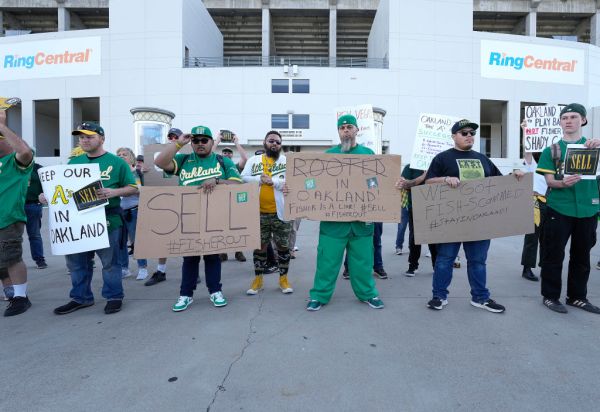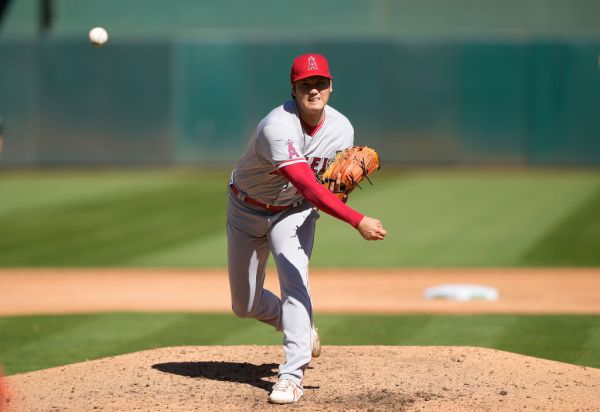We’re about a third of the way through the Major League Baseball (MLB) season, and a consensus is developing that the rules changes implemented this year to make the game more exciting are having their intended effect.
MLB was trying to address three serious problems: Games were taking too long; there were too many plate appearances resulting in so-called “true outcomes”—home runs, strikeouts, or walks—during which infielders and outfielders might just as well have remained in the dugout; and there was too much time between batted balls being put into play.
What changes did MLB make? In a nutshell: 1) Games now feature a pitch clock, meaning pitchers are charged with a ball if they don’t deliver a pitch in time and hitters face a strike call if they are not ready; 2) The defensive shift has been banned—infielders must have their feet in the infield and there must be (at least) two infielders on each side of second base when a pitch is delivered; 3) The bases have been enlarged to encourage stealing; and 4) There are limits on pitchers throwing to a base to hold a runner on.
Have the rules changes had their intended effect, or are some of the game’s problems being masked by the real but misleading increase in the pace of play? Let’s take a look.
Games taking too long.
In the most obvious and widely hailed result, the average game in 2023 has been nearly a half-hour shorter than in 2022: 2 hours, 37 minutes vs. 3 hours, 5 minutes. Simply stated, the pitch clock is working. In a related revenue-enhancement note, many ballparks that had cut off beer sales after seven innings out of concern for fan safety have now extended sales through the eighth inning. (Maybe the rationale is that faster-paced games will be more exciting, thereby accelerating the rate at which those beer purchases are metabolized?)
Too many ‘true outcomes.’
Why are true outcomes such a cause for concern? Because when the only players involved are the pitcher, the catcher, the batter, and the umpire, with infielders and outfielders just standing around, things are … dull.
For reference, let’s look at the true-outcome figures for the 2000 season. In all MLB games played that year, there were 190,261 plate appearances, which included 31,356 strikeouts, 18,237 walks, and 5,693 home runs. That’s a total of 55,286 true-outcomes, for a true-outcome rate of 29.1 percent.
By comparison, using available stats, here are the results for the past two years:
- True-outcomes in 2022 represented 33.4 percent of plate appearances. That’s an increase of about 15 percent since 2000.
- Thus far in 2023, true-outcomes have been running at about 34.4 percent, an increase over 2000 of about 18 percent.
True-outcomes have gone up considerably this century, but not everyone seems all that concerned. In a recent New York Times article, Mets radio announcer Howie Rose said, “Guys are still striking out way too much, pitchers are still walking way too many, guys are still trying to yank the ball out of the park. But because the ball is always being delivered, whether it’s in play or not, it just heightens your senses.” Perhaps. But heightened senses to watch the same parade of walks, strikeouts, and guys trotting around the bases are likely to abate before too long.
With all those true-outcomes enervating the game, MLB wanted to infuse some energy back into ballparks by encouraging players to steal bases. That’s what the bigger bags and the disincentives for pitchers to hold runners on are designed to do.
It’s working. Stolen bases are up from an average of about 1 per game last year to about 1.4 per game in 2023, with stolen base attempts up to about 1.8 per game. That 78 percent success rate is the highest in the game’s history. And a 40 percent increase in stolen bases from year-to-year does sound like quite a lot—until you realize that that works out to only an extra stolen base about once every game plus a couple of innings into the next game.
Too much time between balls being put into play.
The number of batted balls put into play per game has remained essentially unchanged from 2022 to 2023. Since games are a half-hour shorter this year, the “time between batted balls put into play” has indeed gone down. But it isn’t because there’s any more action on the field: It’s because the game has been condensed, with the pitch clock cutting out some fat.
Last fall, I wrote in The Dispatch that MLB’s “(rules) changes are well-intended. But the trouble is that they only treat the symptoms. The root cause, simply stated, is that the balance between pitching and hitting has shifted too far in the pitcher’s favor.”
Facing a similar imbalance in 1968, MLB lowered the pitcher’s mound from 15 inches to 10. It also reduced the size of the strike zone. Pitchers had to adjust, but ace pitchers in 1968 were still aces in 1969. The game carried on.
Over the past couple of decades, batters have been the ones who’ve had to make the adjustments. Two main reasons:
- One was the ever more prevalent use of defensive over-shifts, with a third infielder positioned on the batter’s pull-side of the diamond.
- The other was the seemingly endless supply of pitchers throwing 95 mph fastballs, resulting in—not to put too fine a point on things—a heckuva neurophysiological challenge for hitters, who now had to process an enormous amount of information in fewer and fewer milliseconds. As I wrote last fall, they had to use those precious few milliseconds to determine: “What is the release point? Is it overhand/three-quarters/sidearm? Is it a fastball or an off-speed pitch? Is the spin that of a two-seam fastball, a four-seam fastball, a split-finger fastball, a slider, or a curveball? Where is that pitch going to enter the hitting zone? And is it even going to be in the hitting zone? Or should I take the pitch?” Moreover, with managers ever quicker to change pitch in ers, batters had fewer opportunities to get a bead on Pitcher A’s deliveries before they were facing Pitcher B, and then Pitcher C, and so on.
They responded to that imbalance by uppercutting their swings to hit the ball over the over-shifted infields and, ideally, the fence. Sure, they would strike out more often, a typical result of trying to hit home runs against all those 95-mph-plus fastballs. But as Moneyball taught us, an out is an out is an out. Moneyball also reminded us that the point of the game is to score runs, which home runs have a tendency to do. But both of those outcomes—strikeouts and home runs—are true-outcomes. See the problem?
It should be noted that the changes having to do with stolen bases and positioning of the infielders are designed to condition batters to realize that there are base hits and RBI to be had—which will eventually mean zeros added to contract figures—without having to hit the ball out of the park. MLB understands that it will take time for hitters to condition themselves and sees the current round of rules changes as just a first phase in its improve-the-game efforts.
But the question becomes: Will hitters make those adjustments before fans realize that baseball in 2023 is just a condensed version of the same true-outcome-dominated game that it was before?
Moreover, the pitch clock takes only a baby step toward addressing the pitcher/hitter imbalance, since pitchers can no longer take as long as they need to “reload” between pitches, with deep breaths, centering exercises, downward-facing dogs, and lord knows whatever other techniques they had been using to get those fastballs goosed up.
When will phase two of MLB’s improve-the-game efforts commence? Will it include doing something as substantial about that pitcher/hitter imbalance as in 1968 (ex: moving the mound back)? Or will MLB count on the credulousness of radio announcers and fans—“There might not be any more action, but at least the games don’t last as long!”—to look past the inherent superficiality of the changes that have been made to date?









Please note that we at The Dispatch hold ourselves, our work, and our commenters to a higher standard than other places on the internet. We welcome comments that foster genuine debate or discussion—including comments critical of us or our work—but responses that include ad hominem attacks on fellow Dispatch members or are intended to stoke fear and anger may be moderated.